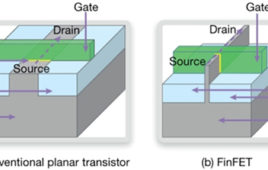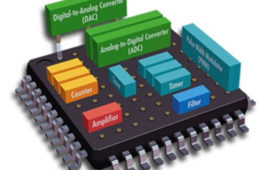Some of you may be familiar with the terms FPGA or Field Programmable Gate Array. And familiarity does not necessarily beget understanding. So what exactly is FPGA?In simple terms it is a logic chip which contains a two dimensional array of logic cells and programmable switches. They are ICs that contain an array of identical logic blocks with programmable interconnections.Just as on a blank canvas you can paint any picture you want, FPGA allows an engineer to design any digital circuit. They say: just generate the bit file, download it and you’re good to go! This is a big development over the traditional microcontrollers as the architecture of such controllers does not support larger designs. For example, microcontrollers like 8051 used Harvard architecture with CISC instruction set. FPGA does not have any inbuilt instruction sets which provide the designer with much greater flexibility. A controller has its own CPU which starts the controller, retains memory and performs several tasks. Unlike microcontrollers, a FPGA will not be able to start functioning on itsown due to lack of the traditional architecture.
All about FINFET
A FinFET is classified as a type of multi-gate Metal Oxide Semiconductor Field Effect Transistor (MOSFET). It was first developed at the University of Berkley, California by Chenming Hu and his colleagues. A multi-gate transistor incorporates more than one gate in to one single device. In FinFET, a thin silicon film wrapped over the conducting channel forms the body. The name has been derived from the fact that the structure, when viewed, looks like a set of fins. The thickness of the device determines the channel length of the device.
All about PSoC
In 2002, Cypress semiconductors started shipping a family of microcontrollers called Programmable system on chip. This family consists of a CPU core and configurable analog and digital blocks which makes it different from traditional microcontrollers. The traditional chips consist only of CPU cores whereas configurable blocks can be found in FPGA, CPLD and ASIC. A PSoC combines the architecture of both making it one of a kind. A System on Chip is a single chip performing functions of several chips put together.



